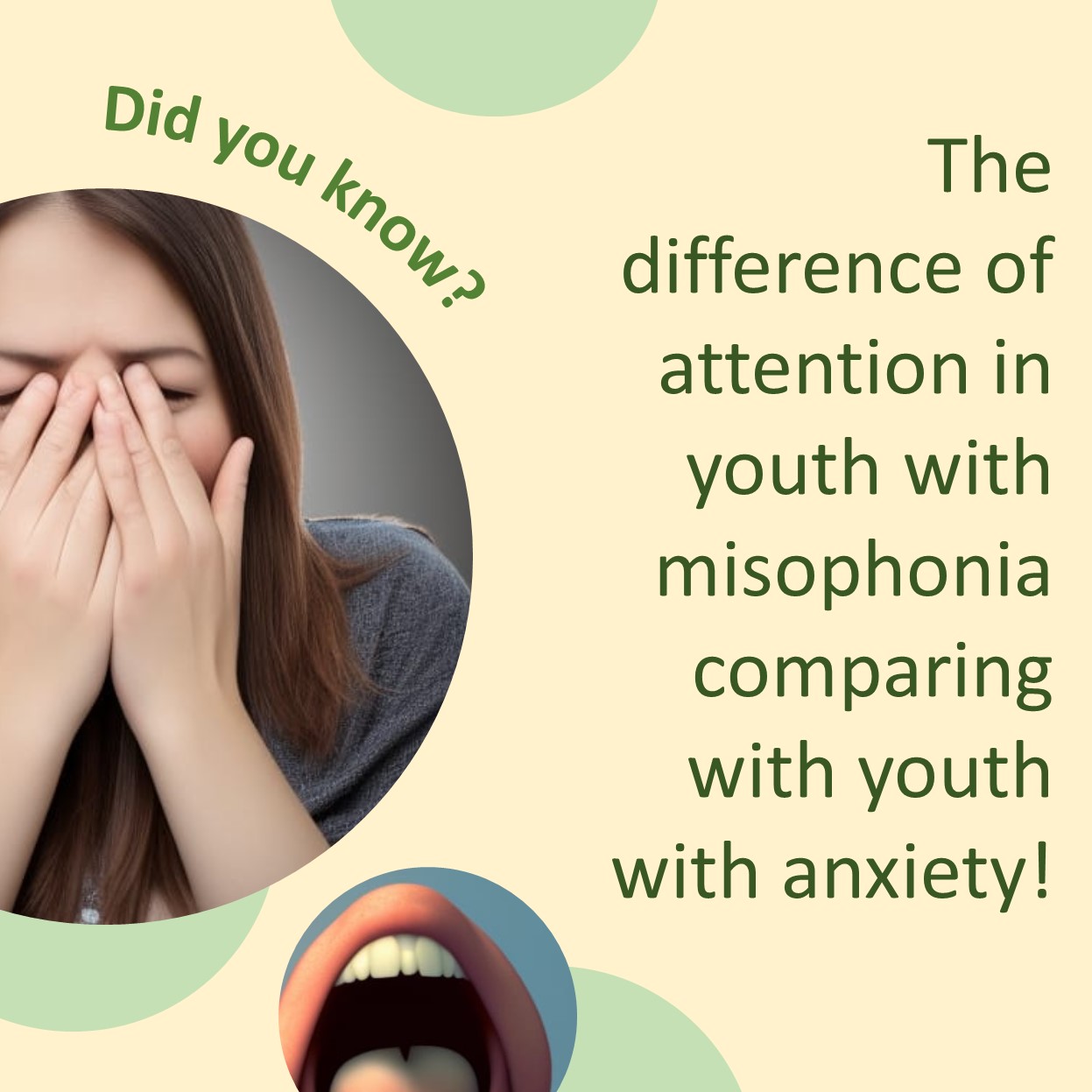Misophonia sufferers often report attention problems when certain sounds trigger are present. The researchers investigate what sets misophonia apart from other issues like anxiety in terms of its effect on attention.

Researchers in America and Sweden conducted a study to see how misophonia affects children and teens’ ability to pay attention. They compared children with misophonia to those with anxiety because previous research suggested that children with anxiety also tend to struggle with attention. By comparing these groups, they hoped to uncover what makes misophonia unique.
To do this, they studied 102 children and adolescents with misophonia and 94 with anxiety disorders. They tested their attention and how they react to things using a computer task called the Immediate Memory Task (IMT).
What is immidiate memory task (IMT)?
The IMT works by presenting participants with sequences of numbers on a screen. These sequences vary in length and content. Participants are then asked to quickly determine whether a second sequence of numbers, presented shortly after the first, matches the first sequence exactly. They indicate their response by pressing a button, usually indicating “yes” if the sequences match and “no” if they do not. For example, First, a sequence of numbers appear: “12345”. After a brief moment, another sequence of numbers pops up: “12346”. The participnats should quickly decide if the second sequence, “12346”, matches the first one, “12345”. In this case, since only one number changed from “5” to “6”, the participnat would press a button to indicate that they do not match.
What does IMT measure?
The task 1) evaluates participants’ immediate memory and their ability to make rapid comparisons between two sets of information, as well as how quickly they can perform these comparisons. In other words, the Immediate Memory Task (IMT) measures a person’s ability to quickly compare and remember sets of numbers, testing how effectively and rapidly someone can pay attention to details and recall information in a short amount of time. In this study, the researchers explained that if the misophonia or anxiety group performs better and faster in the IMT, it suggests they are better at focusing and identifying specific sounds or stimuli that bother them. Additionally, the researchers 2) investigate whether ability and speed in the test are linked to the severity of misophonia symptoms, and 3) whether their ability and speed change depending on age and gender.
Study results
Their research found that children and adolescents with misophonia did better, though not necessarily quicker, in the memory task compared to children and adolescent with just anxiety. This suggests they are really good at noticing small differences in sounds. It means they are extra sensitive to things that most people would not even notice. This might explain why certain sounds bother them so much – their brains are wired to pay more attention to those noises than others.
Additionally, they discovered that the sensitivity or ability to compare in children and adolescents with misophonia is connected to the severity of their symptoms. This implies that the more severe the misophonia, the better their ability to notice subtle differences.
They also found that adolescents tend to be more sensitive to sounds that younger children, suggesting that misophonia might change as they get older due to changes in their brain structure. This also implies that the more frequently children with misophonia are exposed to triggering sounds, the more sensitive they become over time. It is as if their brains become even more adept at noticing those sounds with increased exposure. This could help explain why misophonia can worsen over time if left unmanaged. Considering this is important when studying misophonia and devising strategies to assist affected children.
While their study gives some important clues about misophonia, there are still a lot they do not know. For example, they did not compare children with misophonia to children without any problems, so they are not sure if these differences are only because of misophonia or if they happen in other children too. Also, the computer task they used might not be the best way to understand all the ways misophonia affects attention.
In conclusion, their study helps to understand more about why certain sounds bother children with misophonia so much. By figuring out how misophonia affects attention, they can hopefully find better ways to help children cope with it. There is still a lot more to learn, but this is an important step in finding ways to make life easier for children with misophonia.
What to do if you have misophonia?
Misophonia is a real and highly debilitating disorder that can have a significant impact on individuals’ lives, and it can be challenging to manage without support. If you or someone you know is struggling with misophonia, it is essential to seek help from healthcare professionals who understand the disorder and can provide effective treatment options.